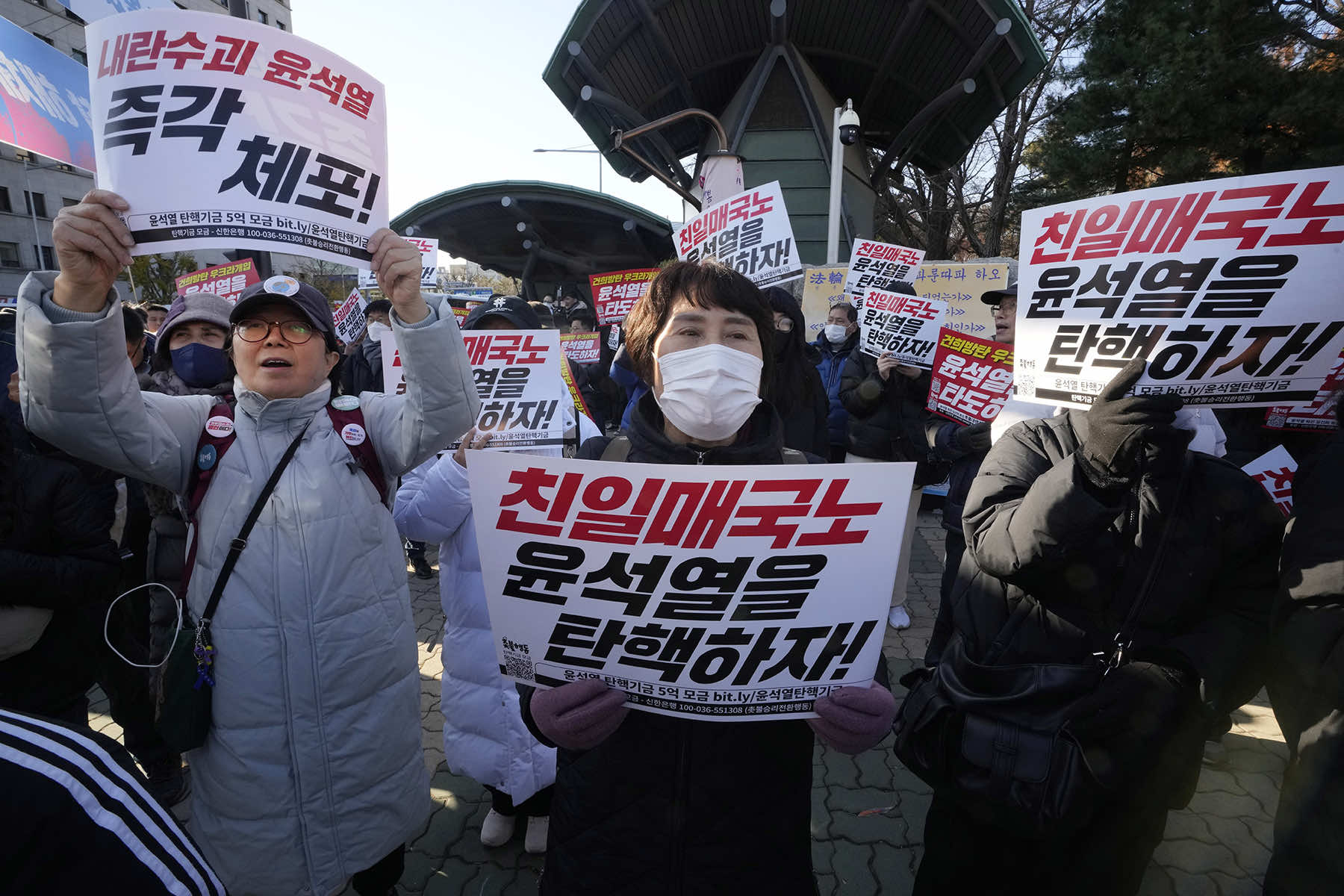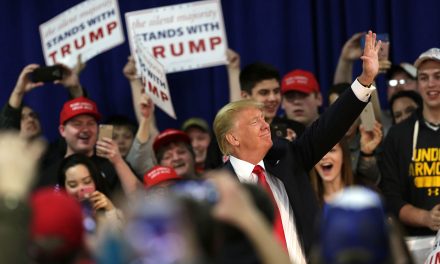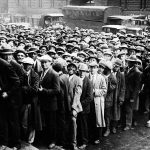
By Myunghee Lee, Assistant Professor, Michigan State University
During a whirlwind few hours in South Korean politics, President Yoon Suk Yeol placed the country under martial law on December 3, 2024, only to lift it just a short while later. It marked the first time that a South Korean leader has imposed the emergency power since 1979.
Although short-lived, the measure provoked concerns of the country backsliding into authoritarian rule. Myunghee Lee, an expert on authoritarianism, democracy, and South Korean politics at Michigan State University explains what happened and what it means for South Korean democracy,
HOW DID ALL THIS UNFOLD?
It was a crazy few hours, and I am still trying to get my head around it – and a lot is still unknown as to why President Yoon did this.
But at around 9:30 p.m. Korean time on December 3, rumors started circulating among journalists that Yoon was planning an emergency press conference.
And then at 10:20-ish, Yoon gave a short speech in which he blamed certain pro-North Korean and anti-state forces in South Korea of trying to destabilize the country. In effect, he was pointing the finger at opposition parties who have been blocking his policies and trying to impeach some of his appointees.
He declared the situation unacceptable and said there was no way for him to continue to smoothly run the county, and as such he was declaring emergency martial law to save the nation from pro-North Korean and anti-state forces.
The minister of defense then held a meeting with major military personnel, set up a martial law headquarters, and Army Chief of Staff General Park An-su was appointed as martial law commander.
A martial law proclamation was then issued stating that all political activities were now banned – including the work of the South Korean parliament. This all took place within around one hour of Yoon’s declaration.
Despite the proclamation, legislators headed to the National Assembly, where some were blocked from entering. But many did get in, and, at around 1 a.m. local time, legislators voted against the martial law – in effect forcing Yoon to repeal his declaration.
He did this but not for another three and a half hours, during which the situation was very tense. He relented at around 4.30 a.m., held another press conference and announced that he was lifting the emergency measure.
WHY DID HE DECLARE MARTIAL LAW NOW?
That is what many people – myself included – are trying to work out. This shocked a lot of people, and it appears many were taken unawares. Obviously some people were in the know, such as the defense minister and army general appointed martial law commander. But it appears even some in his own party were unaware that Yoon was planning to do this.
For sure, some opposition politicians have been warning about something like this happening since September. And Yoon has become increasingly frustrated by both divisions in his own party and moves by the opposition in the National Assembly to block key parts of his agenda. Also Yoon is facing numerous influence-peddling scandals involving both himself and his wife.
WAS THE DECLARATION MADE FROM A POSITION OF STRENGTH?
Hardly. Yoon is in an incredibly weak position: His approval rating has been hovering around the 20% mark. He presides over a divided party, a gridlocked parliament and a population in which he has become very unpopular.
SO WAS THIS AN ACT OF DESPERATION?
I do not think so, no. The suggestion that Yoon took this step before the opposition could impeach him? That does not make sense to me. He was already facing calls for impeachment – but I am not sure that before this episode there was appetite in the country for a second impeachment, following the 2016 impeachment of President Park Geun-hye over a corruption scandal.
So on that front, despite the scandals and the political issues he faced, I do not think this can be characterized as an act of desperation. Especially as those calls for impeachment and removal from power have only been intensified by his actions.
I think Yoon declared martial law out of anger – he was angry, and resentful at the opposition blocking him repeatedly. But then again, I cannot read his mind.
For many, it is regarded as a foolish move – he was in such a weak position politically, it would have seemed unlikely that this tactic would succeed. But he and some of the plotters must have calculated politically that this tactic would give them a chance to gain support from his core base. The real puzzle is what drove him to make that political calculation.
IS YOON KNOWN TO BE AN AUTHORITARIAN FIGURE?
People certainly have aired concern over his autocratic tendencies. Even before this martial law incident, some of his decisions have prompted concerns. He has ignored legal procedures and tried to circumvent the National Assembly. He has certainly shown an illiberal streak at home, attacking the media as “fake news” while smearing opponents as communists and North Korean sympathizers.
But that is not always the way he is perceived in the West. Since the Russian invasion, there have been attempts by foreign policy types to divide the world into two blocs – a liberal one and an illiberal one. Yoon, as a key ally to the U.S., is framed in Washington as a defender of democracy. At home, however, it is a different story.
With the declaration of martial law, his authoritarian tendencies have been amped up for the world to see, and it is difficult to imagine that will not be part of his legacy. But even before this decision, he was known for being authoritarian.
HOW DOES THAT LEGACY FIT INTO THE POLITICAL HISTORY OF SOUTH KOREA?
South Korea has a long history with martial law and autocratic, even military, rule. This latest declaration of martial law is by some counts the 17th instance in Korean history. The last time it was declared was in 1979 following the assassination of Park Chung-hee, a dictator who ruled South Korea during the 1960s and 1970s. That period of martial law lasted until 1981, during which Chun Doo-hwan, another dictator, came to power through a coup and perpetrated a massacre in Gwangju.
Martial law has not been declared since the 1980s, but certainly many older Korean people can still remember that occasion, when troops brutally cracked down on protesters. But since becoming a democracy in 1987, there had not been a declaration of martial law until now.
Interestingly, in a straw poll of my family, age factored into the response to Yoon’s move. Older family members very much feared the declaration of martial law. For younger family members and friends, it was met not as a joke, but certainly as a foolish move that would not actually result in a prolonged period of martial law.
WHAT HAPPENS NEXT?
My guess would be President Yoon’s days are numbered – and that this episode will hasten his political demise. Before the events of December 3, there were still many people in the parliament and the public at large resistant to the idea of another impeachment following the last one in 2016. But there appears to be a groundswell of opinion in the parliament that the president should be removed, and it is echoed by the public.
Ahn Young-Joon (AP)
Originally published on The Conversation under a Creative Commons license as What short-lived martial law says about South Korean democracy and the position of President Yoon
Support evidence-based journalism with a tax-deductible donation today, make a contribution to The Conversation.
- Exploring Korea: Stories from Milwaukee to the DMZ and across a divided peninsula
- A pawn of history: How the Great Power struggle to control Korea set the stage for its civil war
- Names for Korea: The evolution of English words used for its identity from Gojoseon to Daehan Minguk
- SeonJoo So Oh: Living her dream of creating a "folded paper" bridge between Milwaukee and Korean culture
- A Cultural Bridge: Why Milwaukee needs to invest in a Museum that celebrates Korean art and history
- Korean diplomat joins Milwaukee's Korean American community in celebration of 79th Liberation Day
- John T. Chisholm: Standing guard along the volatile Korean DMZ at the end of the Cold War
- Most Dangerous Game: The golf course where U.S. soldiers play surrounded by North Korean snipers
- Triumph and Tragedy: How the 1988 Seoul Olympics became a battleground for Cold War politics
- Dan Odya: The challenges of serving at the Korean Demilitarized Zone during the Vietnam War
- The Korean Demilitarized Zone: A border between peace and war that also cuts across hearts and history
- The Korean DMZ Conflict: A forgotten "Second Chapter" of America's "Forgotten War"
- Dick Cavalco: A life shaped by service but also silence for 65 years about the Korean War
- Overshadowed by conflict: Why the Korean War still struggles for recognition and remembrance
- Wisconsin's Korean War Memorial stands as a timeless tribute to a generation of "forgotten" veterans
- Glenn Dohrmann: The extraordinary journey from an orphaned farm boy to a highly decorated hero
- The fight for Hill 266: Glenn Dohrmann recalls one of the Korean War's most fierce battles
- Frozen in time: Rare photos from a side of the Korean War that most families in Milwaukee never saw
- Jessica Boling: The emotional journey from an American adoption to reclaiming her Korean identity
- A deportation story: When South Korea was forced to confront its adoption industry's history of abuse
- South Korea faces severe population decline amid growing burdens on marriage and parenthood
- Emma Daisy Gertel: Why finding comfort with the "in-between space" as a Korean adoptee is a superpower
- The Soul of Seoul: A photographic look at the dynamic streets and urban layers of a megacity
- The Creation of Hangul: A linguistic masterpiece designed by King Sejong to increase Korean literacy
- Rick Wood: Veteran Milwaukee photojournalist reflects on his rare trip to reclusive North Korea
- Dynastic Rule: Personality cult of Kim Jong Un expands as North Koreans wear his pins to show total loyalty
- South Korea formalizes nuclear deterrent strategy with U.S. as North Korea aims to boost atomic arsenal
- Tea with Jin: A rare conversation with a North Korean defector living a happier life in Seoul
- Journalism and Statecraft: Why it is complicated for foreign press to interview a North Korean defector
- Inside North Korea’s Isolation: A decade of images show rare views of life around Pyongyang
- Karyn Althoff Roelke: How Honor Flights remind Korean War veterans that they are not forgotten
- Letters from North Korea: How Milwaukee County Historical Society preserves stories from war veterans
- A Cold War Secret: Graves discovered of Russian pilots who flew MiG jets for North Korea during Korean War
- Heechang Kang: How a Korean American pastor balances tradition and integration at church
- Faith and Heritage: A Pew Research Center's perspective on Korean American Christians in Milwaukee
- Landmark legal verdict by South Korea's top court opens the door to some rights for same-sex couples
- Kenny Yoo: How the adversities of dyslexia and the war in Afghanistan fueled his success as a photojournalist
- Walking between two worlds: The complex dynamics of code-switching among Korean Americans
- A look back at Kamala Harris in South Korea as U.S. looks ahead to more provocations by North Korea
- Jason S. Yi: Feeling at peace with the duality of being both an American and a Korean in Milwaukee
- The Zainichi experience: Second season of “Pachinko” examines the hardships of ethnic Koreans in Japan
- Shadows of History: South Korea's lingering struggle for justice over "Comfort Women"
- Christopher Michael Doll: An unexpected life in South Korea and its cross-cultural intersections
- Korea in 1895: How UW-Milwaukee's AGSL protects the historic treasures of Kim Jeong-ho and George C. Foulk
- "Ink. Brush. Paper." Exhibit: Korean Sumukhwa art highlights women’s empowerment in Milwaukee
- Christopher Wing: The cultural bonds between Milwaukee and Changwon built by brewing beer
- Halloween Crowd Crush: A solemn remembrance of the Itaewon tragedy after two years of mourning
- Forgotten Victims: How panic and paranoia led to a massacre of refugees at the No Gun Ri Bridge
- Kyoung Ae Cho: How embracing Korean heritage and uniting cultures started with her own name
- Complexities of Identity: When being from North Korea does not mean being North Korean
- A fragile peace: Tensions simmer at DMZ as North Korean soldiers cross into the South multiple times
- Byung-Il Choi: A lifelong dedication to medicine began with the kindness of U.S. soldiers to a child of war
- Restoring Harmony: South Korea's long search to reclaim its identity from Japanese occupation
- Sado gold mine gains UNESCO status after Tokyo pledges to exhibit WWII trauma of Korean laborers
- The Heartbeat of K-Pop: How Tina Melk's passion for Korean music inspired a utopia for others to share
- K-pop Revolution: The Korean cultural phenomenon that captivated a growing audience in Milwaukee
- Artifacts from BTS and LE SSERAFIM featured at Grammy Museum exhibit put K-pop fashion in the spotlight
- Hyunjoo Han: The unconventional path from a Korean village to Milwaukee’s multicultural landscape
- The Battle of Restraint: How nuclear weapons almost redefined warfare on the Korean peninsula
- Rejection of peace: Why North Korea's increasing hostility to the South was inevitable
- WonWoo Chung: Navigating life, faith, and identity between cultures in Milwaukee and Seoul
- Korean Landmarks: A visual tour of heritage sites from the Silla and Joseon Dynasties
- South Korea’s Digital Nomad Visa offers a global gateway for Milwaukee’s young professionals
- Forgotten Gando: Why the autonomous Korean territory within China remains a footnote in history
- A game of maps: How China prepared to steal Korean history to prevent reunification
- From Taiwan to Korea: When Mao Zedong shifted China’s priority amid Soviet and American pressures
- Hoyoon Min: Putting his future on hold in Milwaukee to serve in his homeland's military
- A long journey home: Robert P. Raess laid to rest in Wisconsin after being MIA in Korean War for 70 years
- Existential threats: A cost of living in Seoul comes with being in range of North Korea's artillery
- Jinseon Kim: A Seoulite's creative adventure recording the city’s legacy and allure through art
- A subway journey: Exploring Euljiro in illustrations and by foot on Line 2 with artist Jinseon Kim
- Seoul Searching: Revisiting the first film to explore the experiences of Korean adoptees and diaspora















